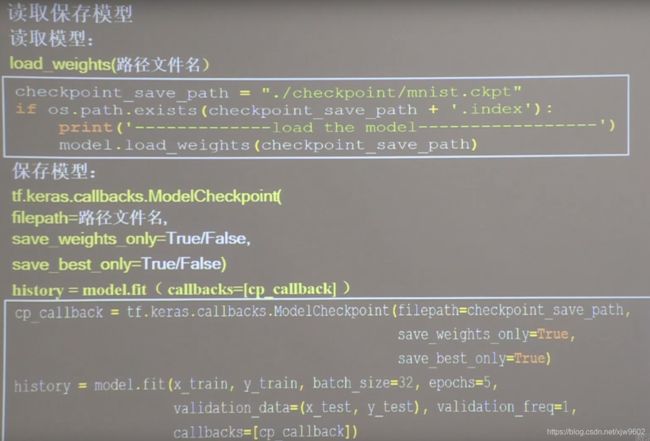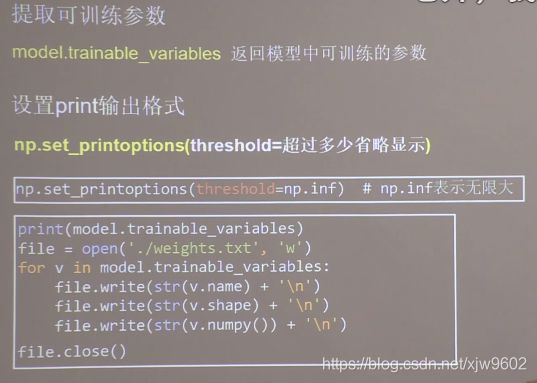- Python实现简单的机器学习算法
master_chenchengg
pythonpython办公效率python开发IT
Python实现简单的机器学习算法开篇:初探机器学习的奇妙之旅搭建环境:一切从安装开始必备工具箱第一步:安装Anaconda和JupyterNotebook小贴士:如何配置Python环境变量算法初体验:从零开始的Python机器学习线性回归:让数据说话数据准备:从哪里找数据编码实战:Python实现线性回归模型评估:如何判断模型好坏逻辑回归:从分类开始理论入门:什么是逻辑回归代码实现:使用skl
- 如何有效的学习AI大模型?
Python程序员罗宾
学习人工智能语言模型自然语言处理架构
学习AI大模型是一个系统性的过程,涉及到多个学科的知识。以下是一些建议,帮助你更有效地学习AI大模型:基础知识储备:数学基础:学习线性代数、概率论、统计学和微积分等,这些是理解机器学习算法的数学基础。编程技能:掌握至少一种编程语言,如Python,因为大多数AI模型都是用Python实现的。理论学习:机器学习基础:了解监督学习、非监督学习、强化学习等基本概念。深度学习:学习神经网络的基本结构,如卷
- 机器学习与深度学习的区别
eqa11
机器学习
文章目录机器学习与深度学习的区别一、引言二、机器学习概述1、机器学习定义1.1、机器学习的应用2、机器学习算法三、深度学习概述1、深度学习定义1.1、深度学习的应用2、深度学习算法四、机器学习与深度学习的区别1、学习方法2、数据需求3、应用领域五、总结机器学习与深度学习的区别一、引言在人工智能的浪潮中,机器学习和深度学习无疑是最耀眼的两颗明星。它们在许多领域都取得了令人瞩目的成就,从自动驾驶汽车到
- MATLAB车牌识别系统
清风明月来几时
图像算法处理matlab开发语言
MATLAB车牌识别系统是一个基于MATLAB开发的用于识别和提取车牌信息的系统。该系统使用图像处理和机器学习算法来实现车牌的定位和字符识别。以下是一个基本的MATLAB车牌识别系统的工作流程:图像预处理:首先,将输入的图像进行预处理,包括灰度化、高斯平滑、边缘检测等操作,以提高后续的车牌定位和字符识别的准确性。车牌定位:在预处理后的图像中,使用形态学运算和边缘检测算法来寻找车牌的位置。这可以通过
- 十大机器学习算法-梯度提升决策树(GBDT)
zjwreal
机器学习GBDT机器学习梯度提升提升树梯度提升决策树
简介梯度提升决策树(GBDT)由于准确率高、训练快速等优点,被广泛应用到分类、回归合排序问题中。该算法是一种additive树模型,每棵树学习之前additive树模型的残差。许多研究者相继提出XGBoost、LightGBM等,又进一步提升了GBDT的性能。基本思想提升树-BoostingTree以决策树为基函数的提升方法称为提升树,其决策树可以是分类树或者回归树。决策树模型可以表示为决策树的加
- 通俗理解线性回归(Linear Regression)
小夏refresh
机器学习数据挖掘机器学习算法人工智能数据挖掘
线性回归,最简单的机器学习算法,当你看完这篇文章,你就会发现,线性回归是多么的简单.首先,什么是线性回归.简单的说,就是在坐标系中有很多点,线性回归的目的就是找到一条线使得这些点都在这条直线上或者直线的周围,这就是线性回归(LinearRegression).是不是有画面感了?那么我们上图片:![1.png][1]那么接下来,就让我们来看看具体的线性回归吧首先,我们以二维数据为例:我们有一组数据x
- c++ +Opencv实现车牌自动识别
听忆.
人工智能计算机视觉
c+++Opencv实现车牌自动识别1.图像预处理2.车牌定位3.字符分割4.字符识别完整流程概述:边走、边悟迟早会好要用C++和OpenCV实现车牌自动识别,主要流程分为几个步骤:图像预处理:提高车牌区域的可见度,方便后续的车牌定位与字符识别。车牌定位:通过图像处理和特征提取,定位车牌在图像中的位置。字符分割:将车牌区域中的字符逐个分割出来。字符识别:利用机器学习算法或者OCR(光学字符识别)技
- NPU技术总结
技术学习分享
webglprocesson
NPUs简介定义:NPUs是一种专门为执行机器学习算法和神经网络操作而设计的处理器。起源:随着人工智能和深度学习的发展,NPUs应运而生,以满足对高效率和高能效的计算需求。NPUs的设计架构:NPUs通常采用不同于传统CPU或GPU的架构,优化了矩阵运算和并行处理。指令集:它们拥有专门的指令集,用于加速神经网络中的常见操作,如卷积和激活函数。NPUs的核心技术并行性:NPUs利用数据并行性和任务并
- 机器学习面试题目分享面试经验分享 机器学习算法工程师深度学习 经典问题
好家伙VCC
面试机器学习面试经验分享stm32嵌入式硬件单片机fpga开发
标题机器学习面经总结的常见面试题目等作业帮实习视觉算法一面凉凉经3.16号投递图像算法实习生,昨天hr打电话约了今早上牛客面试面试官还是很和蔼的,问了很多基础和细节,平时我都没有注意到的,肯定凉了,在这里记录一下,分享给大家由于我本科研究生都是计算机的,因此问了一些计算机基础的东西,但是由于年代久远,我都不记得了机器学习方面知识因为缺少一些动手实践,因此很多细节都不了解感谢面试官让我了解到这么多不
- 机器学习算法 —— LightGBM
ZShiJ
机器学习算法机器学习算法分类
欢迎来到我的博客——探索技术的无限可能!博客的简介(文章目录)目录背景描述数据说明数据来源LightGBMLightGBM原理简介LightGBM的优点LightGBM的缺点LightGBM的应用基于英雄联盟数据集的LightGBM分类实战函数库导入数据读取/载入数据信息简单查看可视化描述利用LightGBM进行训练与预测利用LightGBM进行特征选择通过调整参数获得更好的效果基本参数调整针对训
- 机器人路径规划的机器学习算法
科技大本营
机器人机器学习算法
机器学习算法正在重塑机器人在复杂和动态环境中导航的方式,而机器人路径规划就是其中一个重要领域。传统方法通常在受控环境中表现良好,但在处理实时出现的障碍或变化时往往失效。通过机器学习,机器人可以从数据和经验中学习,做出智能决策并优化路线。本文回顾了一些在机器人路径规划领域中占主导地位的主要机器学习算法,它们的实际应用以及推动此技术进一步发展的趋势。了解机器人路径规划机器人路径规划是指确定机器人从起始
- python机器学习算法--贝叶斯算法
在下小天n
机器学习python机器学习算法
1.贝叶斯定理在20世纪60年代初就引入到文字信息检索中,仍然是文字分类的一种热门(基准)方法。文字分类是以词频为特征判断文件所属类型或其他(如垃圾邮件、合法性、新闻分类等)的问题。原理牵涉到概率论的问题,不在详细说明。sklearn.naive_bayes.GaussianNB(priors=None,var_smoothing=1e-09)#Bayes函数·priors:矩阵,shape=[n
- 人工智能&机器学习&深度学习
AA杂货铺111
机器学习:一切通过优化方法挖掘数据中规律的学科。深度学习:一切运用了神经网络作为参数结构进行优化的机器学习算法。强化学习:不仅能利用现有数据,还可以通过对环境的探索获得新数据,并利用新数据循环往复地更新迭代现有模型的机器学习算法。学习是为了更好地对环境进行探索,而探索是为了获取数据进行更好的学习。深度强化学习:一切运用了神经网络作为参数结构进行优化的强化学习算法。人工智能定义与分类人工智能(Art
- 生成式AI:创造性智能的新纪元
Lill_bin
杂谈人工智能分布式zookeeper机器学习算法
引言随着人工智能技术的飞速发展,生成式AI(GenerativeAI)已经成为一个引人注目的领域。它不仅仅是模仿人类行为,而是通过学习大量的数据,创造出全新的内容,如文本、图像、音乐等。本文将探讨生成式AI的基本原理、应用领域以及它对未来社会可能产生的影响。什么是生成式AI?生成式AI是一种利用机器学习算法,特别是深度学习技术,来生成新的数据样本的人工智能。这些数据样本在统计上与训练数据相似,但又
- python logistic regression_机器学习算法与Python实践之逻辑回归(Logistic Regression)
weixin_39702649
pythonlogisticregression
机器学习算法与Python实践这个系列主要是参考下载地址:https://bbs.pinggu.org/thread-2256090-1-1.html一、逻辑回归(LogisticRegression)Logisticregression(逻辑回归)是当前业界比较常用的机器学习方法,用于估计某种事物的可能性。之前在经典之作《数学之美》中也看到了它用于广告预测,也就是根据某广告被用户点击的可能性,把
- python logistic模型_Python实践之逻辑回归(Logistic Regression)
weixin_39922394
pythonlogistic模型
机器学习算法与Python实践这个系列主要是参考《机器学习实战》这本书。因为自己想学习Python,然后也想对一些机器学习算法加深下了解,所以就想通过Python来实现几个比较常用的机器学习算法。恰好遇见这本同样定位的书籍,所以就参考这本书的过程来学习了。这节学习的是逻辑回归(LogisticRegression),也算进入了比较正统的机器学习算法。啥叫正统呢?我概念里面机器学习算法一般是这样一个
- 周报 | 24.8.26-24.9.1文章汇总
双木的木
python拓展学习深度学习拓展阅读目标检测人工智能python计算机视觉gpttransformerstablediffusion
为了更好地整理文章和发表接下来的文章,以后每周都汇总一份周报。周报|24.8.19-24.8.25文章汇总-CSDN博客python|提升代码迭代速度的Python重载方法-CSDN博客机器学习算法与Python学习|黑匣子被打开了?能玩的Transformer可视化解释工具!_研究别人的黑盒算法机器学习python-CSDN博客极市平台|语言图像模型大一统!Meta将Transformer和Di
- 自然语言处理系列五十》文本分类算法》SVM支持向量机算法原理
陈敬雷-充电了么-CEO兼CTO
算法大数据人工智能算法自然语言处理分类nlpai人工智能chatgpt
注:此文章内容均节选自充电了么创始人,CEO兼CTO陈敬雷老师的新书《自然语言处理原理与实战》(人工智能科学与技术丛书)【陈敬雷编著】【清华大学出版社】文章目录自然语言处理系列五十SVM支持向量机》算法原理SVM支持向量机》代码实战总结自然语言处理系列五十SVM支持向量机》算法原理SVM支持向量机在文本分类的应用场景中,相比其他机器学习算法有更好的效果。下面介绍其原理,并用SparkMLlib机器
- 【大数据】孤立森林算法
大雨淅淅
大数据算法python大数据人工智能
目录一、孤立森林算法概述二、孤立森林算法优缺点和改进2.1孤立森林算法优点2.2孤立森林算法缺点2.3孤立森林算法改进三、孤立森林算法代码实现3.1孤立森林算法python实现3.2孤立森林算法JAVA实现3.3孤立森林算法C++实现四、孤立森林算法应用一、孤立森林算法概述孤立森林算法是一种用于异常检测的机器学习算法。它基于这样的直觉:异常点是数据中的少数派,它们在特征空间中的分布与正常数据点不同
- 如何开发针对不平衡分类的成本敏感神经网络 python
背包客研究
不平衡学习分类神经网络python
如何开发针对不平衡分类的成本敏感神经网络深度学习神经网络是一类灵活的机器学习算法,可以在各种问题上表现良好。神经网络使用误差反向传播算法进行训练,该算法涉及计算模型在训练数据集上产生的误差,并根据这些误差的比例更新模型权重。这种训练方法的局限性在于,每个类别的示例都被视为相同,对于不平衡的数据集,这意味着模型对一个类别的适应性要强得多,而对另一个类别的适应性则弱得多。反向传播算法可以更新,以根据类
- 大肠杆菌数据集的不平衡多类分类 Python
背包客研究
不平衡学习分类python人工智能
大肠杆菌数据集的不平衡多类分类关注博主学习更多内容关注vxGZH:多目标优化与学习Lab教程概述本教程分为五个部分;他们是:大肠杆菌数据集探索数据集模型测试和基线结果评估模型评估机器学习算法评估数据过采样对新数据进行预测大肠杆菌数据集在这个项目中,我们将使用一个标准的不平衡机器学习数据集,称为“大肠杆菌”数据集,也称为“蛋白质定位位点”数据集。该数据集描述了利用细胞定位位点的氨基酸序列对大肠杆菌蛋
- 人工智能在网络安全领域的应用探索
亿林数据
人工智能web安全安全网络安全
随着网络技术的飞速发展,网络安全问题日益凸显,成为制约数字化进程的重要瓶颈。人工智能(AI)作为一种变革性技术,正逐步在网络安全领域展现出其巨大的潜力和价值。本文旨在探讨人工智能在网络安全领域的应用现状、优势、挑战及未来发展趋势。一、人工智能在网络安全中的应用现状威胁检测与响应人工智能通过机器学习算法,能够自动识别网络中的异常行为,如未经授权的访问、恶意软件传播等。传统的安全系统依赖于静态规则和签
- 从自动驾驶看无人驾驶叉车的技术落地和应用
电气_空空
自动驾驶自动驾驶机器人人工智能毕设
摘要|介绍无人驾驶叉车在自动驾驶技术中的应用,分析其关键技术,如环境感知、定位、路径规划等,并讨论机器学习算法和强化学习算法的应用以提高无人叉车的运行效率和准确性。无人叉车在封闭结构化环境、机器学习、有效数据集等方法的助力下,可有效推动叉车无人驾驶关键技术的发展。关键词:无人叉车;自动驾驶;机器学习;数据集随着人工智能技术的持续进步,无人叉车领域的供给与需求均呈现迅猛增长态势。它们不仅正在逐步替代
- 深度学习100问13:什么是二分类问题
不断持续学习ing
人工智能机器学习自然语言处理
嘿,你知道二分类问题不?这就像是一个“超级裁判”,要把东西分成两大类。一、定义及举例想象一下,生活中有很多时候我们得决定一个东西到底属于哪一边。就像判断一封邮件,是“垃圾邮件”呢,还是“正常邮件”;或者看看一个病人,是“得了某种病”呢,还是“没得病”。二、解决方法要解决二分类问题呀,我们可以找来一些“魔法工具”,也就是机器学习算法。像逻辑回归啦、支持向量机啦、决策树啦等等。这些算法就像聪明的小助手
- Python学习和面试中的常见问题及答案
写代码的M教授
Python学习计划python学习面试
整理了一些关于Python和机器学习算法的高级问题及其详细答案。这些问题涵盖了多个方面,包括数据处理、模型训练、评估、优化和实际应用。一、Python编程问题解释Python中的装饰器(Decorators)是什么?它们的作用是什么?答案:装饰器是一种高阶函数,能够在不修改函数定义的情况下扩展或修改函数的行为。它们通常用于日志记录、权限验证、缓存等场景。使用@decorator_name语法将装饰
- 机器学习算法深度总结(5)-逻辑回归
婉妃
1.模型定义逻辑回归属于基于概率分类的学习法.基于概率的模式识别是指对模式x所对应的类别y的后验概率禁行学习.其所属类别为后验概率最大时的类别:预测类别的后验概率,可理解为模式x所属类别y的可信度.逻辑回归(logistic),使用线性对数函数对分类后验概率进行模型化:上式,分母是满足概率总和为1的约束条件的正则化项,参数向量维数为:考虑二分类问题:使用上述关系式,logistic模型的参数个数从
- python 数据挖掘与机器学习
科研的力量
人工智能ChatGPTpython数据挖掘机器学习神经网络随机森林决策树贝叶斯
近年来,Python编程语言受到越来越多科研人员的喜爱,在多个编程语言排行榜中持续夺冠。同时,伴随着深度学习的快速发展,人工智能技术在各个领域中的应用越来越广泛。机器学习是人工智能的基础,因此,掌握常用机器学习算法的工作原理,并能够熟练运用Python建立实际的机器学习模型,是开展人工智能相关研究的前提和基础。模块一:课前准备Python编程基础与进阶Python编程入门1、Python环境搭建(
- 1区9+非肿瘤纯生信,逻辑清晰易懂,机器学习筛选关键基因的纯生信也可以发高水平期刊,抓紧上车!
生信小课堂
影响因子:9.186关于非肿瘤生信,我们也解读过很多,主要有以下类型1单个疾病WGCNA+PPI分析筛选hub基因。2单个疾病结合免疫浸润,热点基因集,机器学习算法等。3两种相关疾病联合分析,包括非肿瘤结合非肿瘤,非肿瘤结合肿瘤或者非肿瘤结合泛癌分析4基于分型的非肿瘤生信分析5单细胞结合普通转录组生信分析目前非肿瘤生信发文的门槛较低,有需要的朋友欢迎交流研究概述:本研究首先使用R语言在三个基因表达
- 深度学习速通系列:贝叶思&SVM
Ven%
支持向量机人工智能深度学习算法机器学习
贝叶斯(Bayesian)方法和支持向量机(SVM,SupportVectorMachine)是两种不同的机器学习算法,它们在解决分类和回归问题时有着不同的原理和应用场景贝叶斯方法:贝叶斯方法基于贝叶斯定理,这是一种利用已知信息(先验概率)来预测未知事件(后验概率)的概率方法。它通常用于分类问题,特别是当数据集较小或存在类别不平衡时。贝叶斯方法可以处理不确定性,并且可以通过增加新的数据来更新先验概
- 机器学习(ML)算法分类
活蹦乱跳酸菜鱼
机器学习
机器学习(ML)算法是一个广泛而多样的领域,涵盖了多种用于数据分析和模式识别的技术。以下是一些常见的机器学习算法分类及其具体算法:一、监督学习算法监督学习算法使用标记(即已知结果)的训练数据来训练模型,以便对新数据进行预测。线性回归:用于建立连续变量之间的关系,通过拟合一条直线或超平面来预测新数据的输出值。逻辑回归:虽然名称中包含“回归”,但实际上是用于分类问题,特别是二分类问题。通过将线性回归模
- 设计模式介绍
tntxia
设计模式
设计模式来源于土木工程师 克里斯托弗 亚历山大(http://en.wikipedia.org/wiki/Christopher_Alexander)的早期作品。他经常发表一些作品,内容是总结他在解决设计问题方面的经验,以及这些知识与城市和建筑模式之间有何关联。有一天,亚历山大突然发现,重复使用这些模式可以让某些设计构造取得我们期望的最佳效果。
亚历山大与萨拉-石川佳纯和穆雷 西乐弗斯坦合作
- android高级组件使用(一)
百合不是茶
androidRatingBarSpinner
1、自动完成文本框(AutoCompleteTextView)
AutoCompleteTextView从EditText派生出来,实际上也是一个文本编辑框,但它比普通编辑框多一个功能:当用户输入一个字符后,自动完成文本框会显示一个下拉菜单,供用户从中选择,当用户选择某个菜单项之后,AutoCompleteTextView按用户选择自动填写该文本框。
使用AutoCompleteTex
- [网络与通讯]路由器市场大有潜力可挖掘
comsci
网络
如果国内的电子厂商和计算机设备厂商觉得手机市场已经有点饱和了,那么可以考虑一下交换机和路由器市场的进入问题.....
这方面的技术和知识,目前处在一个开放型的状态,有利于各类小型电子企业进入
&nbs
- 自写简单Redis内存统计shell
商人shang
Linux shell统计Redis内存
#!/bin/bash
address="192.168.150.128:6666,192.168.150.128:6666"
hosts=(${address//,/ })
sfile="staticts.log"
for hostitem in ${hosts[@]}
do
ipport=(${hostitem
- 单例模式(饿汉 vs懒汉)
oloz
单例模式
package 单例模式;
/*
* 应用场景:保证在整个应用之中某个对象的实例只有一个
* 单例模式种的《 懒汉模式》
* */
public class Singleton {
//01 将构造方法私有化,外界就无法用new Singleton()的方式获得实例
private Singleton(){};
//02 申明类得唯一实例
priva
- springMvc json支持
杨白白
json springmvc
1.Spring mvc处理json需要使用jackson的类库,因此需要先引入jackson包
2在spring mvc中解析输入为json格式的数据:使用@RequestBody来设置输入
@RequestMapping("helloJson")
public @ResponseBody
JsonTest helloJson() {
- android播放,掃描添加本地音頻文件
小桔子
最近幾乎沒有什麽事情,繼續鼓搗我的小東西。想在項目中加入一個簡易的音樂播放器功能,就像華為p6桌面上那麼大小的音樂播放器。用過天天動聽或者QQ音樂播放器的人都知道,可已通過本地掃描添加歌曲。不知道他們是怎麼實現的,我覺得應該掃描設備上的所有文件,過濾出音頻文件,每個文件實例化為一個實體,記錄文件名、路徑、歌手、類型、大小等信息。具體算法思想,
- oracle常用命令
aichenglong
oracledba常用命令
1 创建临时表空间
create temporary tablespace user_temp
tempfile 'D:\oracle\oradata\Oracle9i\user_temp.dbf'
size 50m
autoextend on
next 50m maxsize 20480m
extent management local
- 25个Eclipse插件
AILIKES
eclipse插件
提高代码质量的插件1. FindBugsFindBugs可以帮你找到Java代码中的bug,它使用Lesser GNU Public License的自由软件许可。2. CheckstyleCheckstyle插件可以集成到Eclipse IDE中去,能确保Java代码遵循标准代码样式。3. ECLemmaECLemma是一款拥有Eclipse Public License许可的免费工具,它提供了
- Spring MVC拦截器+注解方式实现防止表单重复提交
baalwolf
spring mvc
原理:在新建页面中Session保存token随机码,当保存时验证,通过后删除,当再次点击保存时由于服务器端的Session中已经不存在了,所有无法验证通过。
1.新建注解:
? 1 2 3 4 5 6 7 8 9 10 11 12 13 14 15 16 17 18
- 《Javascript高级程序设计(第3版)》闭包理解
bijian1013
JavaScript
“闭包是指有权访问另一个函数作用域中的变量的函数。”--《Javascript高级程序设计(第3版)》
看以下代码:
<script type="text/javascript">
function outer() {
var i = 10;
return f
- AngularJS Module类的方法
bijian1013
JavaScriptAngularJSModule
AngularJS中的Module类负责定义应用如何启动,它还可以通过声明的方式定义应用中的各个片段。我们来看看它是如何实现这些功能的。
一.Main方法在哪里
如果你是从Java或者Python编程语言转过来的,那么你可能很想知道AngularJS里面的main方法在哪里?这个把所
- [Maven学习笔记七]Maven插件和目标
bit1129
maven插件
插件(plugin)和目标(goal)
Maven,就其本质而言,是一个插件执行框架,Maven的每个目标的执行逻辑都是由插件来完成的,一个插件可以有1个或者几个目标,比如maven-compiler-plugin插件包含compile和testCompile,即maven-compiler-plugin提供了源代码编译和测试源代码编译的两个目标
使用插件和目标使得我们可以干预
- 【Hadoop八】Yarn的资源调度策略
bit1129
hadoop
1. Hadoop的三种调度策略
Hadoop提供了3中作业调用的策略,
FIFO Scheduler
Fair Scheduler
Capacity Scheduler
以上三种调度算法,在Hadoop MR1中就引入了,在Yarn中对它们进行了改进和完善.Fair和Capacity Scheduler用于多用户共享的资源调度
2. 多用户资源共享的调度
- Nginx使用Linux内存加速静态文件访问
ronin47
Nginx是一个非常出色的静态资源web服务器。如果你嫌它还不够快,可以把放在磁盘中的文件,映射到内存中,减少高并发下的磁盘IO。
先做几个假设。nginx.conf中所配置站点的路径是/home/wwwroot/res,站点所对应文件原始存储路径:/opt/web/res
shell脚本非常简单,思路就是拷贝资源文件到内存中,然后在把网站的静态文件链接指向到内存中即可。具体如下:
- 关于Unity3D中的Shader的知识
brotherlamp
unityunity资料unity教程unity视频unity自学
首先先解释下Unity3D的Shader,Unity里面的Shaders是使用一种叫ShaderLab的语言编写的,它同微软的FX文件或者NVIDIA的CgFX有些类似。传统意义上的vertex shader和pixel shader还是使用标准的Cg/HLSL 编程语言编写的。因此Unity文档里面的Shader,都是指用ShaderLab编写的代码,然后我们来看下Unity3D自带的60多个S
- CopyOnWriteArrayList vs ArrayList
bylijinnan
java
package com.ljn.base;
import java.util.ArrayList;
import java.util.Iterator;
import java.util.List;
import java.util.concurrent.CopyOnWriteArrayList;
/**
* 总述:
* 1.ArrayListi不是线程安全的,CopyO
- 内存中栈和堆的区别
chicony
内存
1、内存分配方面:
堆:一般由程序员分配释放, 若程序员不释放,程序结束时可能由OS回收 。注意它与数据结构中的堆是两回事,分配方式是类似于链表。可能用到的关键字如下:new、malloc、delete、free等等。
栈:由编译器(Compiler)自动分配释放,存放函数的参数值,局部变量的值等。其操作方式类似于数据结构中
- 回答一位网友对Scala的提问
chenchao051
scalamap
本来准备在私信里直接回复了,但是发现不太方便,就简要回答在这里。 问题 写道 对于scala的简洁十分佩服,但又觉得比较晦涩,例如一例,Map("a" -> List(11,111)).flatMap(_._2),可否说下最后那个函数做了什么,真正在开发的时候也会如此简洁?谢谢
先回答一点,在实际使用中,Scala毫无疑问就是这么简单。
- mysql 取每组前几条记录
daizj
mysql分组最大值最小值每组三条记录
一、对分组的记录取前N条记录:例如:取每组的前3条最大的记录 1.用子查询: SELECT * FROM tableName a WHERE 3> (SELECT COUNT(*) FROM tableName b WHERE b.id=a.id AND b.cnt>a. cnt) ORDER BY a.id,a.account DE
- HTTP深入浅出 http请求
dcj3sjt126com
http
HTTP(HyperText Transfer Protocol)是一套计算机通过网络进行通信的规则。计算机专家设计出HTTP,使HTTP客户(如Web浏览器)能够从HTTP服务器(Web服务器)请求信息和服务,HTTP目前协议的版本是1.1.HTTP是一种无状态的协议,无状态是指Web浏览器和Web服务器之间不需要建立持久的连接,这意味着当一个客户端向服务器端发出请求,然后We
- 判断MySQL记录是否存在方法比较
dcj3sjt126com
mysql
把数据写入到数据库的时,常常会碰到先要检测要插入的记录是否存在,然后决定是否要写入。
我这里总结了判断记录是否存在的常用方法:
sql语句: select count ( * ) from tablename;
然后读取count(*)的值判断记录是否存在。对于这种方法性能上有些浪费,我们只是想判断记录记录是否存在,没有必要全部都查出来。
- 对HTML XML的一点认识
e200702084
htmlxml
感谢http://www.w3school.com.cn提供的资料
HTML 文档中的每个成分都是一个节点。
节点
根据 DOM,HTML 文档中的每个成分都是一个节点。
DOM 是这样规定的:
整个文档是一个文档节点
每个 HTML 标签是一个元素节点
包含在 HTML 元素中的文本是文本节点
每一个 HTML 属性是一个属性节点
注释属于注释节点
Node 层次
- jquery分页插件
genaiwei
jqueryWeb前端分页插件
//jquery页码控件// 创建一个闭包 (function($) { // 插件的定义 $.fn.pageTool = function(options) { var totalPa
- Mybatis与Ibatis对照入门于学习
Josh_Persistence
mybatisibatis区别联系
一、为什么使用IBatis/Mybatis
对于从事 Java EE 的开发人员来说,iBatis 是一个再熟悉不过的持久层框架了,在 Hibernate、JPA 这样的一站式对象 / 关系映射(O/R Mapping)解决方案盛行之前,iBaits 基本是持久层框架的不二选择。即使在持久层框架层出不穷的今天,iBatis 凭借着易学易用、
- C中怎样合理决定使用那种整数类型?
秋风扫落叶
c数据类型
如果需要大数值(大于32767或小于32767), 使用long 型。 否则, 如果空间很重要 (如有大数组或很多结构), 使用 short 型。 除此之外, 就使用 int 型。 如果严格定义的溢出特征很重要而负值无关紧要, 或者你希望在操作二进制位和字节时避免符号扩展的问题, 请使用对应的无符号类型。 但是, 要注意在表达式中混用有符号和无符号值的情况。
&nbs
- maven问题
zhb8015
maven问题
问题1:
Eclipse 中 新建maven项目 无法添加src/main/java 问题
eclipse创建maevn web项目,在选择maven_archetype_web原型后,默认只有src/main/resources这个Source Floder。
按照maven目录结构,添加src/main/ja
- (二)androidpn-server tomcat版源码解析之--push消息处理
spjich
javaandrodipn推送
在 (一)androidpn-server tomcat版源码解析之--项目启动这篇中,已经描述了整个推送服务器的启动过程,并且把握到了消息的入口即XmppIoHandler这个类,今天我将继续往下分析下面的核心代码,主要分为3大块,链接创建,消息的发送,链接关闭。
先贴一段XmppIoHandler的部分代码
/**
* Invoked from an I/O proc
- 用js中的formData类型解决ajax提交表单时文件不能被serialize方法序列化的问题
中华好儿孙
JavaScriptAjaxWeb上传文件FormData
var formData = new FormData($("#inputFileForm")[0]);
$.ajax({
type:'post',
url:webRoot+"/electronicContractUrl/webapp/uploadfile",
data:formData,
async: false,
ca
- mybatis常用jdbcType数据类型
ysj5125094
mybatismapperjdbcType
MyBatis 通过包含的jdbcType
类型
BIT FLOAT CHAR





